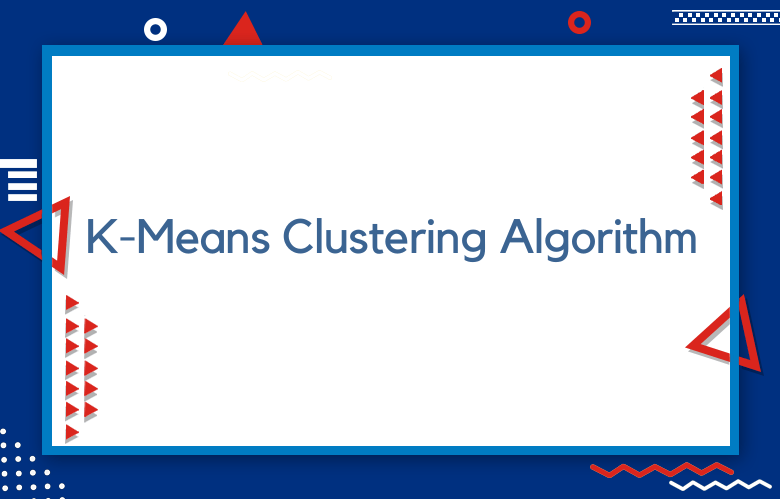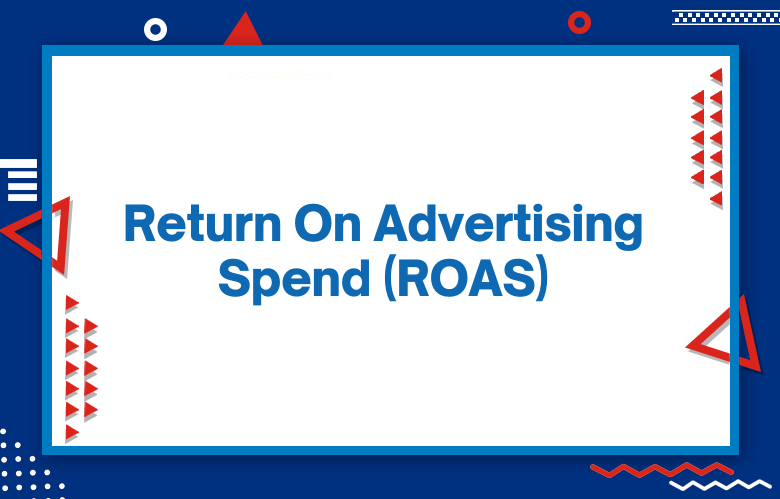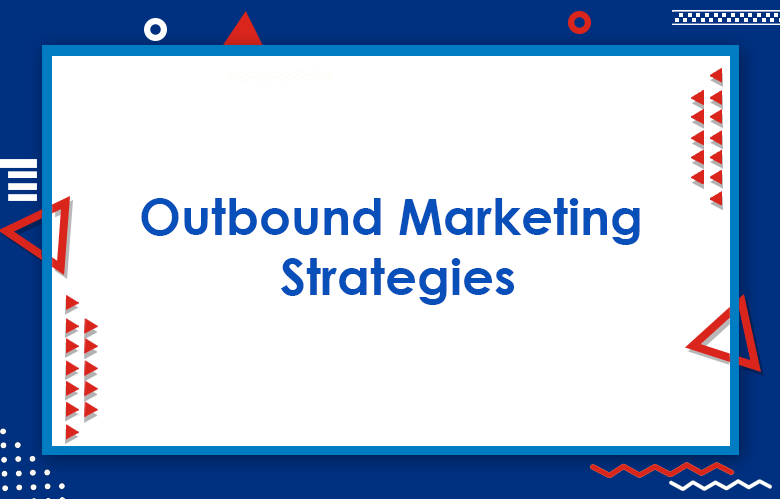How to use a K-Means Clustering Algorithm for Marketing Analytics

The world of marketing analytics is constantly changing, and knowing the latest trends can be challenging. However, using clustering algorithms is the present trend, specifically the k-means clustering algorithm.
Clustering algorithms are a data mining technique that can group data points based on similarities. This can be incredibly useful for marketing analytics because it can help you group customers based on shared characteristics.
For example, let’s have a dataset of customer orders from an online store. Using a k-means clustering algorithm, you could group customers based on what they ordered, how much they spent, and when they purchased. This would allow you to segment and target your customer base with specific marketing campaigns.
Additionally, you could use the k-means clustering algorithm to segment your website visitors by their location, browsing history, and demography. This would give you a better understanding of who your website visitors are.
The K-Means Clustering Algorithm is a powerful marketing tool that can segment customers, understand customer behavior, and predict future behavior. Businesses can better target their marketing efforts and improve their bottom line by understanding how to use this algorithm.
What is the K-Means Clustering Algorithm?
K-Means Clustering Algorithm is a machine-learning technique that groups similar data points. The algorithm splits a dataset into K groups, where K is the number of desired groups.
Each group’s data points are assigned based on their similarity to the other issues. The algorithm then iterates through the dataset, moving each end to the group that it is most similar to. Once all topics have been assigned to a group, the algorithm converges and outputs the final K clusters.
K-Means Clustering Algorithm is commonly used for marketing purposes, customer segmentation, and data analysis tasks, such as Finding K-nearest neighbors.
K-Means Clustering Algorithm is the most popular clustering algorithm used to partition n objects into k clusters; each object with the nearest mean belongs to the group. The algorithm works in five steps:
- Specify the number of groups, k.
- Randomly select k objects from the dataset. These objects will be the initial centroids.
- Calculate the distance between each object and each centroid.
- Assign each object to the cluster with the nearest centroid.
- Calculate the new centroid for each cluster by taking the mean of all clusters’ objects.
- Repeat steps 3-5 until convergence is reached (i.e., the centroids no longer change). K-Means Clustering Algorithm is a fast and efficient way to cluster data. However, K-Means has some disadvantages, such as its sensitivity to outliers and difficulty identifying non-convex clusters.
K-Means clustering is a data mining technique that clusters data points into groups, or “clusters.” It is a type of unsupervised learning which does not require a label or category for the data points. The algorithm works by iteratively assigning data points to the nearest cluster center and then re-calculating the cluster center based on the new data point assignments.
K-Means clustering is typically used for exploratory data analysis and is particularly well-suited for datasets with a large number of data points. It is also relatively fast and easy to implement, making it one of the most popular clustering algorithms.
K-Means clustering is not without its limitations, however. It can be sensitive to outliers and unsuitable for data sets with complex cluster structures. Additionally, the algorithm can get stuck in local minima, which may not converge on the global optimum solution. Despite these limitations, K-Means clustering remains popular for many data mining applications.
K-Means Clustering Algorithm is an iterative algorithm where the data are partitioned into K clusters. K is the number of cluster centers. The K-Means Clustering Algorithm converges when the assignment of data points to cluster centers does not change.
K-Means Clustering Algorithm is sensitive to scale due to its reliance on Euclidean distance, so it is essential to normalize data before applying the algorithm. K-Means Clustering Algorithm can be used for applications such as Image Segmentation and Pattern Recognition.
How Does the K-Means Clustering Algorithm Work?
The k-means clustering algorithm takes a dataset and randomly assigns each data point to a cluster. It then calculates the mean of each group and gives each data point to the group. This process is repeated until when there is no change in the groups. The user typically determines the number of clusters (k).
One of the benefits of the k-means clustering algorithm is that it is relatively simple to understand and implement. It is also swift and efficient, making it ideal for large datasets. However, one downside of the k-means clustering algorithm is that it can be sensitive to outliers, impacting its results.
How the K-Means Algorithm Works
The K-Means Clustering Algorithm divides a dataset into k clusters, where each group is defined by its center (mean). This algorithm is commonly used for marketing analytics because it can segment customers, understand customer behavior, and predict future behavior.
There are two steps in the K-Means Clustering Algorithm:
- Assign each data point to the cluster with the nearest mean.
- Recompute the mean of each group.
These two steps are repeated until convergence occurs when the clusters stabilize and no longer change.
This algorithm is robust because it can segment customers, understand customer behavior, and predict future behavior. Businesses can better target their marketing efforts and improve their bottom line by understanding how to use this algorithm.
How to use a K-Means Clustering Algorithm for Marketing Analytics
K-Means Clustering Algorithm is a Machine Learning algorithm that clusters data points into K distinct clusters. It is an unsupervised learning algorithm that does not require labels or target values. The K-Means Clustering Algorithm can be used for marketing analytics to segment customers into K-distinct groups. This can be useful for targeted marketing campaigns.
To use the K-Means Clustering Algorithm, the data points must be numeric. The K-Means Clustering Algorithm works by iteratively assigning data points to the nearest cluster center and then updating the cluster centers. Choosing the correct K value is essential to get meaningful results from the K-Means Clustering Algorithm.
K-Means Clustering Algorithm is a Machine Learning technique that divides the data into K groups. The algorithm is an unsupervised learning algorithm that does not require training data. It is a simple yet powerful technique that can be used for marketing analytics.
The K-Means Clustering Algorithm can segment customers into different groups based on their buying behavior. This will help marketers target customers with personalized marketing campaigns.
The K-Means Clustering Algorithm can also segment the markets into other groups. This will help marketers to identify the potential needs for their products. The K-Means Clustering Algorithm can also segment the data into different groups. This will help the analysts to identify the patterns in the data.
K-means clustering is a machine-learning algorithm that is used for unsupervised classification. K-Means clustering can be used for marketing tasks, such as customer segmentation, identifying spending patterns, and predicting customer churn.
The K-Means algorithm divides the data into K clusters, where a centroid defines each collection. K-Means Clustering is a powerful tool for marketing analytics because it can help simplify complex data sets and identify hidden patterns.
K-Means Clustering is a popular algorithm for marketing analytics. The algorithm groups data points into ‘clusters’ based on similarity. This can be useful for identifying customer segments or determining which factors are most important for customer satisfaction.
K-Means Clustering is relatively easy to use and is widely available in software packages. This article will briefly describe the use of the K-Means Clustering algorithm in marketing analytics.
First, the data set must be prepared. This includes ensuring that all values are numeric and all variables are independent.
Next, the K-Means Clustering algorithm is applied to the data set. The number of clusters (K) must be chosen beforehand – typically, K is selected between 2 and 10. The K-Means Clustering algorithm will then group the data points into K clusters.
Once the clusters have been identified, marketing analysts can examine them in detail. For example, they may look at each cluster’s average customer satisfaction score.
This can help to identify which clusters are most important for marketing campaigns. Additionally, analysts may examine the characteristics of each group to gain insights into what factors are most important for customers in that cluster.
Ultimately, K-Means Clustering can be a valuable tool for marketing analytics, helping to identify customer segments and understand what factors are most important for customer satisfaction.
Ways to Use K-Means Clustering Algorithm for Marketing Analytics
Segmenting Customers by Purchase History
You can use the K-Means clustering algorithm to segment your customers by purchase history. This will allow you to target your marketing efforts and improve customer loyalty effectively.
Identifying High-Value Customers
You can also use the K-Means clustering algorithm to identify your high-value customers. This will allow you to focus your marketing efforts on retaining and growing these valuable relationships.
Predicting Customer Churn
The K-Means clustering algorithm helps to predict customer churn. By identifying customers at risk of leaving, you can take steps to retain them.
Segmenting Prospects by Similarity
If you have a database of prospects, you can use the K-Means clustering algorithm to segment them by similarity. This will allow you to target your marketing efforts and improve conversion rates effectively.
Identifying Influential Customers
You can also use the K-Means clustering algorithm to identify influential customers. These customers will likely promote your products or services to their social networks. Targeting these customers can amplify your marketing efforts and reach a wider audience.
Segmenting Blog Readers by Interests
When you have a blog, you can use the K-Means clustering algorithm to segment your readers by interests. This will allow you to customize your content and ensure it is relevant to your audience.
Identifying Potential Partners
You can also use the K-Means clustering algorithm to identify potential partners for joint marketing ventures. By targeting companies with similar customer bases, you can reach a wider audience with your marketing campaigns.
Segmenting Employees by Skillset
If you have a large workforce, you can use the K-Means clustering algorithm to segment employees by skill set. This will allow you to match employees with projects that fit their skills and experience well.
Identifying At-Risk Employees
The K-Means clustering algorithm can also identify employees at risk of leaving the company. By taking steps to retain these employees, you can reduce turnover and save on training costs.
K-means clustering can segment customers based on their purchase behavior. This can help target marketing campaigns or design personalized offers.
K-means clustering can segment customers based on their demographics. This can be helpful for understanding which customer groups are most likely to respond to specific marketing messages or offers.
K-means clustering can segment prospects based on their likelihood to convert. This can help allocate marketing resources more efficiently and focus conversion efforts on the most promising leads.
K-means clustering can be used to identify product affinities. This can help develop targeted marketing campaigns, cross-selling and upselling strategies, and product recommendations.
K-means clustering can be used to understand which channels are most effective at acquiring new customers. This can help allocate marketing spending more effectively and optimize acquisition efforts.
K-means clustering can be used to understand which channels are most effective at driving customer loyalty and retention. This can help develop targeted loyalty programs and maximize the lifetime value of customers.
K-means clustering can segment employees based on their skill set and experience level. This can help identify training and development needs and succession planning opportunities.
K-means clustering can be used to identify which job roles are most likely to lead to turnover. This can help develop retention strategies and reduce turnover rates.
Identifying Prospects
Another everyday use for the K-Means clustering algorithm is for identifying prospects. This can be done by collecting data on potential customers and then using the K-Means algorithm to group them into different segments. This can be useful for sales and marketing teams, as it allows them to focus on groups of prospects most likely to become customers.
Analyzing Web Traffic
The K-Means clustering algorithm can also be used to analyze web traffic. This can be done by collecting data on website visitors and then using the K-Means algorithm to group them into different segments. This can be useful for understanding which groups of visitors are most likely to convert and tailoring the website experience to various visitor types.
Measuring Campaign Effectiveness
Another everyday use for the K-Means clustering algorithm is for measuring campaign effectiveness. This can be done by collecting data on customer behavior before and after a marketing campaign and then using the K-Means algorithm to group customers into different segments. This can be useful for understanding which groups of customers are most responsive to other movements and for making future marketing efforts more effective.
Predicting Customer Churn
The K-Means clustering algorithm can also be used to predict customer churn. This can be done by collecting customer demographics and behavior data and using the K-Means algorithm to group customers into different segments. This can be useful for identifying which groups of customers are at risk of churning and for developing strategies to retain them.
Detecting Fraudulent Activity
Another everyday use for the K-Means clustering algorithm is for detecting fraudulent activity. This can be done by collecting data on customer behavior and then using the K-Means algorithm to group customers into different segments. This can be useful for identifying which groups of customers are more likely to engage in fraud and taking steps to prevent it.
Optimizing Supply Chains
The K-Means clustering algorithm can also be used for optimizing supply chains. This can be done by collecting data on supplier performance and then using the K-Means algorithm to group suppliers into different segments. This can be useful for identifying which groups of suppliers are more reliable and for making sure that they can meet demand.
Improving Customer Service
Another everyday use of the K-Means clustering algorithm is to improve customer service. This can be done by collecting data on customer complaints and then using the K-Means algorithm to group them into different segments. This can be useful for identifying which groups of customers are more likely to experience problems and for taking steps to improve their experience.
Identifying potential new customers
K-Means clustering can also be used to identify potential new customers. By clustering data points representing customer characteristics, you can locate groups of people interested in your product or service.
Predicting customer lifetime value
Another way to use K-Means clustering for marketing analytics is to predict customer lifetime value. You can allocate your resources more effectively by understanding which customers are more valuable.
Determining customer churn risk
Customer churn is a significant problem for businesses, representing lost revenue. K-Means clustering can determine which customers are at risk of churning.
Optimizing marketing campaigns
K-Means clustering can also be used to optimize marketing campaigns. By understanding which segments of customers are most likely to respond positively to a campaign, you can focus your efforts on those groups and achieve better results.
Allocating marketing spend
In addition to optimizing campaigns, K-Means clustering can allocate marketing spending more effectively. By understanding which segments of customers are most valuable, you can ensure that your marketing budget is spent in the most efficient way possible.
Analyzing customer satisfaction
Customer satisfaction is essential for businesses to track, as it can significantly impact loyalty and retention. K-Means clustering can be used to analyze customer satisfaction data to identify areas for improvement.
Measuring brand equity
Brand equity is the value a customer assigns to a brand based on their perceptions and experiences. K-Means clustering can be used to measure brand equity by understanding how different segments of customers feel about a brand.
Segmentation of Customers
K-Means Clustering can segment customers into different groups based on their purchasing habits. This information can then target each group with specific marketing campaigns.
Identification of Loyal Customers
K-Means Clustering can also identify loyal customers who are more likely to make repeat purchases. This information can be used to target these customers with special discounts or promotions.
Analysis of Sales Data
K-means clustering can be used to analyze sales data to identify trends and patterns. This data can then be used to make decisions about pricing, inventory, and other aspects of the business.
Prediction of Future Sales
K-Means Clustering can also be used to predict future sales by identifying potential new customers and markets.
Segmentation of Web Traffic
K-Means Clustering can also be used to segment web traffic into different groups based on browsing habits. This information can then target each group with specific advertising or content.
Identification of At-Risk Customers
K-Means Clustering can also identify at-risk customers likely to churn or cancel their service. This information can then be used to target these customers with retention campaigns.
Analysis of Clickstream Data
K-Means Clustering can also be used to analyze clickstream data to understand user behavior on a website or application. This information can then be used to improve the user experience or change the site’s design.
Prediction of Future Behaviors
K-means clustering can also predict users’ future behaviors by understanding their past behavior patterns. This information can then be used to decide product development or marketing strategies.
Identifying Loyalty Programs
Another way that businesses can use the K-Means clustering algorithm is to identify loyalty programs. Loyalty programs are designed to encourage customers. Companies can use the K-Means algorithm to determine which customers are most likely loyal and design loyalty programs tailored to them.
Analyzing Sales Data
Businesses can also use the K-Means clustering algorithm to analyze sales data. By analyzing sales data, companies can identify trends and make decisions about pricing, promotions, and product development.
Targeting Advertising
The K-Means clustering algorithm can also be used for targeted advertising. By targeting advertising, businesses can ensure that their ads are seen by those most likely to be interested in them.
Identifying Influencers
Another way that businesses can use the K-Means clustering algorithm is to identify influencers. Influencers almost have a large following on social media or other online platforms. They can be precious for promoting products and services to their followers.
Studying Web Traffic
Businesses can also use the K-Means clustering algorithm for studying web traffic. By looking at web traffic, companies can identify which pages are visited most often and make changes accordingly.
Analyzing App Usage Data
The K-Means clustering algorithm can also be used to analyze app usage data. By analyzing app usage data, businesses can identify which app features are used most often and make changes accordingly.
Predicting Customer Churn
Another way that businesses can use the K-Means clustering algorithm is to predict customer churn. Companies can use the K-Means algorithm to identify which customers are at risk of churning and take steps to prevent it.
Detecting Fraudulent Activity
The K-Means clustering algorithm can also be used to detect fraudulent activity. Fraudulent activity is when someone uses false information or takes part in illegal activity to obtain something from a business or individual.
Identifying Buying Patterns
Another everyday use of K-Means clustering is to identify buying patterns. This can be done by using data such as product features, price points, and customer demographics to cluster customers into groups. This can be helpful for businesses as it can allow them to identify trends and target specific groups of customers with tailored marketing messages.
Predicting Customer Churn
Another everyday use of K-Means clustering is for predicting customer churn. This can be done using customer demographics, purchase history, and behavioral data to cluster customers into groups. This can be helpful for businesses as it can allow them to identify potential churn risks and take steps to prevent them.
Analyzing Web Traffic
Another everyday use of K-Means clustering is for analyzing web traffic. This can be done using website usage, clickstream, and demographic data to cluster visitors into groups. This can be helpful for businesses as it can allow them to understand how different groups of visitors interact with their website and take steps to improve the user experience.
Detecting Fraudulent Transactions
Another everyday use of K-Means clustering is for detecting fraudulent transactions. This can be done by using data such as transaction amount, transaction time, and customer information to cluster transactions into groups. This can be helpful for businesses as it can allow them to identify potential fraud risks and take steps to prevent them.
Conclusion
Marketing analytics is essential for any business that wants to stay competitive.
The k-means clustering algorithm is a segmentation technique that has recently gained traction due to its simplicity and efficiency.
If you’re looking for a way to segment your customer base, the k-means clustering algorithm may be worth considering.
K-Means Clustering is a great way to segment your market and find areas for improvement.
You can better cater to their needs by understanding how your customers think.
If you need help with marketing analytics, our team of experts is here to help. We’ll work with you to create a data-driven marketing strategy that gets results. Contact us today to learn more.
Call: +91 9848321284
Email: [email protected]



